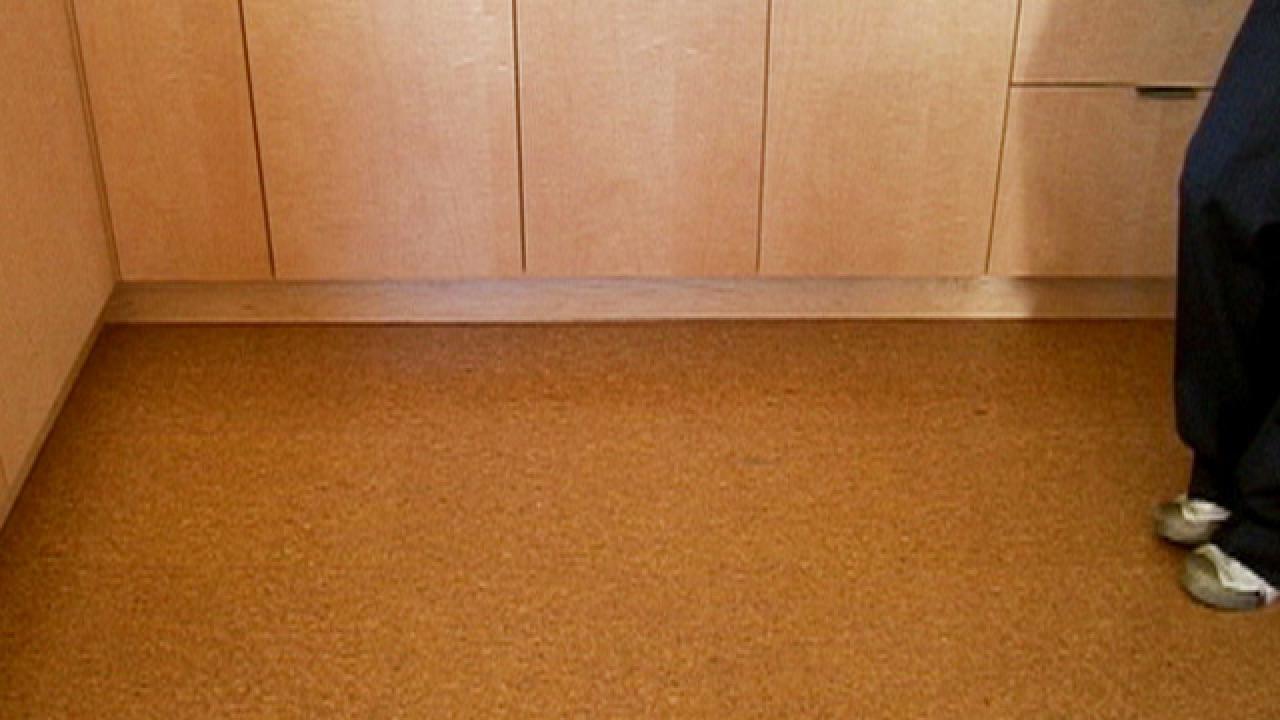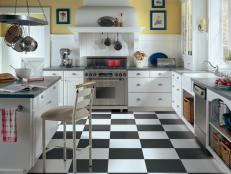Cork Flooring for Your Kitchen

For comfort-conscious cooks, cork is a great floor: Its inherent softness and springiness makes standing for long periods much easier on backs, legs, and feet. And if you drop your favorite soup tureen, chances are it will bounce rather than break.
A high-style floor option, cork flooring comes in planks, tiles, or sheets in a variety of fashionable colors. A natural insulator, cork is warm underfoot, muffles sound, and helps reduce energy bills. (Read more on the benefits of cork flooring.)
Cork Kitchen Floors
See All PhotosWhat You Need to Know
The Lowdown: Cork is harvested from the bark of the cork oak tree—a beech relative that grows primarily in the Mediterranean. The material is ground, mixed with resins, and cut into floors. Cork flooring straddles the line between resilient and engineered floor categories.
Tough Enough? Cork is naturally resistant to water, heat, and mold. To minimize uneven wear, place mats on frequently used areas (such as in front of the range) and rotate heavy items, such as shelving units. Limit direct sunlight to avoid fading.
How to Clean: Wipe up spills immediately. Sweep, dust, or vacuum regularly, and occasionally wipe the surface with a damp mop or cloth. Keep floors free of dirt and sand, as they can scratch the surface over time. Refinish when signs of wear appear.
Considerations When Choosing a Cork Floor
When choosing cork floors for the kitchen, here are factors to consider:
Color: Though all require sealing, cork flooring can be left natural, stained, or even painted for a variety of shade options.
Finish: Some cork floors come prefinished, while others are finished on site. Choose from a variety of finish options, including wax, polyurethane, and vinyl coatings.
Thickness/Durability: Choose the cork that best suits your budget and needs. Thicker floors are better insulators, and denser floors are more durable.
Underlayment: Cork flooring can be installed—glued or floating—over flat surfaces, including wood and concrete. A plywood underlayment at least 1/4 inch thick is recommended and required when installing over existing floors.
Cork planks snap together fairly easily for a floating installation. Tiles, which can be used to create patterns, are more difficult to install, as they must be glued. Cork flooring is a natural thermal insulator. Because it doesn't conduct heat and cold, it helps maintain temperature in a room.
If you don't love the tap-tap of footsteps, cork is the floor for you. It reduces sound and vibration transmission by absorbing it in tiny cells. And because it contains Suberin (a waxy substance found in cork cells), cork floors inherently resist mold, insects, and allergens.








































